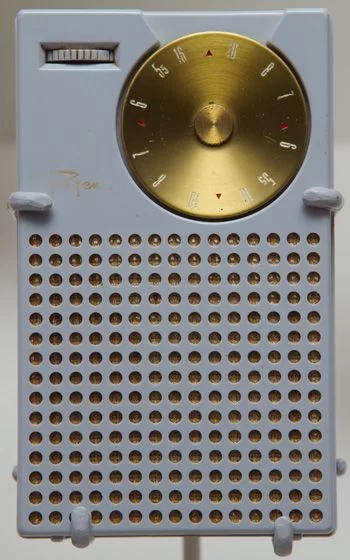Texas Instruments announced plans for the Regency TR-1, the first transistor radio to be commercially sold, on October 18, 1954.
The move was a major one in tech history that would help propel transistors into mainstream use and also give new definition to portable electronics.
TI was producing germanium transistors at the time, but the market had been slow to respond, comfortable with vacuum tubes.
However, the use of transistors instead of vacuum tubes as the amplifier elements meant that the device was much smaller, required less power to operate, and was more shock-resistant. Transistor use also allowed “instant-on” operation because there were no filaments to heat up.
As to mobility, the typical portable tube radio of the 1950s was about the size and weight of a lunchbox, and was powered by several heavy, non-rechargeable batteries. A transistor radio could fit in a pocket, weighed half a pound, and was powered by a single compact 9V battery. (See TI photo on right.)
With these pros in mind, TI’s executive vice president Pat Haggerty “decided that the electronics industry needed a transistor wake-up call and that a small radio would provide it,” according to TI’s Web site.
For more detail: TI announces 1st transistor radio, October 18, 1954


